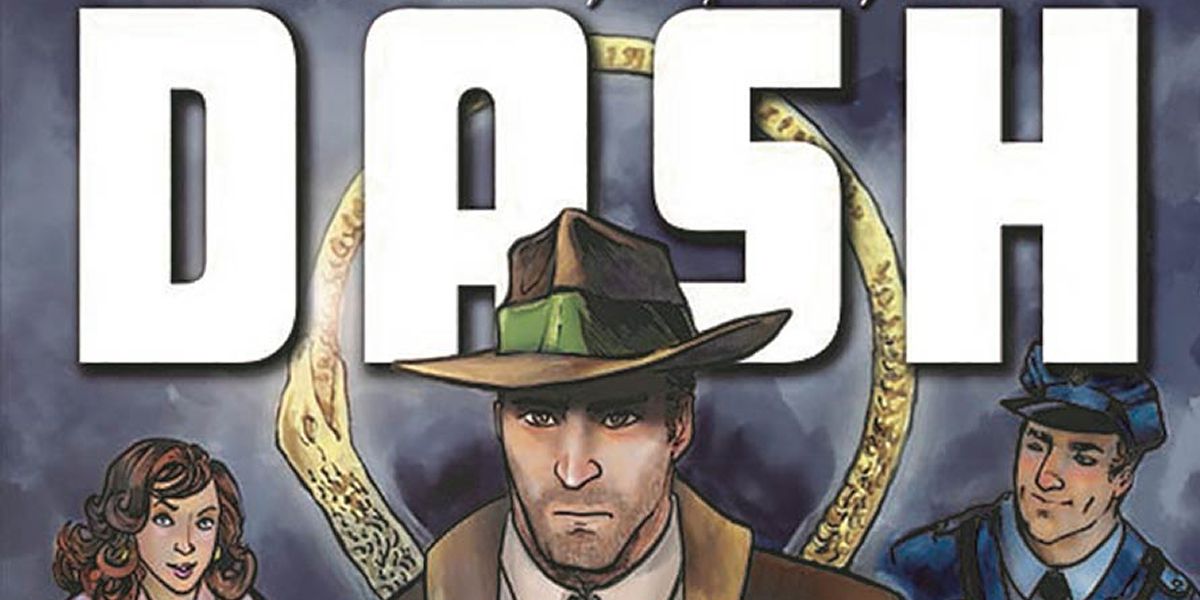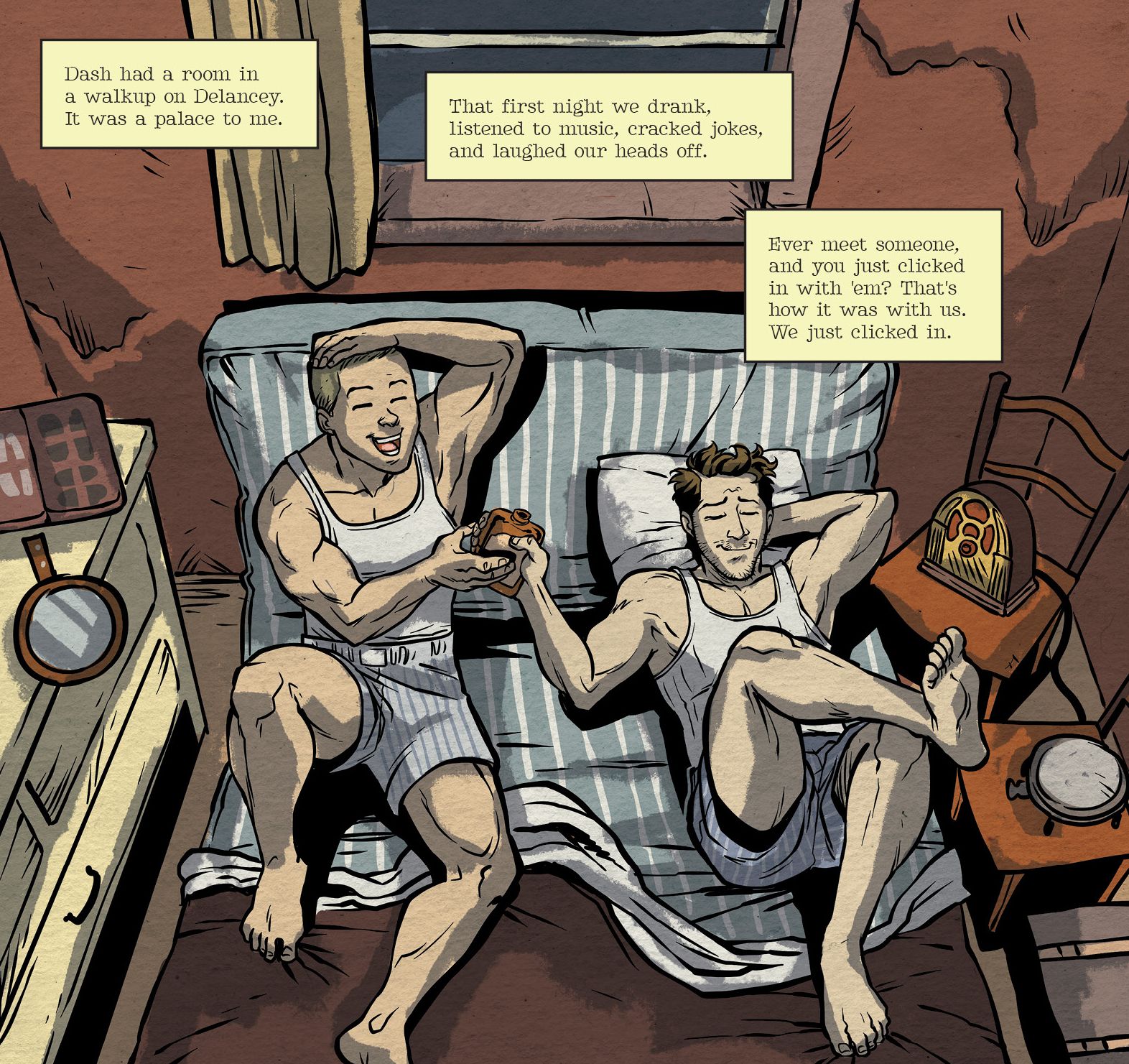Thank you for joining me again! It's time for another Queer Comics from a Queer Perspective. As usual, please remember two things: 1) Spoilers ahead and 2) I cannot speak for the Queer community. These are only my thoughts as a lifelong comics reader.
This month I'd like to explore a little history, so jump in your Tardis and join me as we go back to 1940. 1940 was the year Dick Grayson was created, the year before Wonder Woman was introduced to the world, and Superman had just turned two. It's also the year Dave Ebersole, Delia Gable, and Vinnie Rico set Dash: The Case of the Mysterious Zita Makara. I first discovered this book at the Northwest Press booth at Emerald City Comic Con. It's a film noir/horror comic that I immediately fell in love with.
Dashiell Malone, his secretary Cindy Crenshaw, his best friend Sal McGillicutty, and his love, Johnny "Plink" Plinketts are the main characters. Admittedly, they feel slightly anachronistic. Historical fiction allows us to view the world as it was and sigh a bit in relief at how much better it is, but history repeats itself -- oftentimes cruelly. The self-hate and legal persecution Queer people experience feels both historical and contemporary. While Dash is beautifully free of homophobia, a number of people in the story aren't as free. The contrast exists to make sure we don't forget the bravery of the people who came before us and to remind us that the fight isn't over.
Dash's romance with Plinks is cut short, but we're offered some lovely flashbacks. I'm a big sucker for romance, so I love them. But the book primarily focuses on the interpersonal relationships between Dash and Cindy and Dash and Sal.
There are a lot of Bromances in comics -- Batman and Superman, Cap and Iron Man, but there aren't necessarily a lot of friendships between Queer and straight characters. That's one of the reasons I appreciate Dash and Sal's friendship. It reminds me of some of the closest friendships in my life. I wish I could say that I knew Ebersole was making a statement about allyship, but art is as much about what we bring to it as an audience as it is what the writer intends.
The book's last chapter is more action-oriented, like the third act of The Big Sleep, a classic film noir that everyone should see. Don't try to make any sense of it. The movie is insane, but it's amazing. (Make sure you watch the Bogart and Bacall version. It's the best one.) This is not to say the last part of Dash doesn't make sense; it does. It's slightly jarring as the first part is classic Hollywood, and the last has a sprinkling of '70s action film aesthetics. Am I dating myself by not thinking of the '70s as vintage? Maybe it's just because I'm a child of the '70s -- now I'm dating myself...
Dash is a great reminder of just how many great comics there are. There are so many different ways to read new authors, new artists, and new characters. It's more important than ever to support them all. As history repeats itself, so do some comics fans. There are so many ways to discover new stories, and we don't always explore as much as we ought to. So let's raise a glass of sparkling water to Dash and to finding new comics. You should read about Dash Malone because it's a really good book by new writers and artists.



